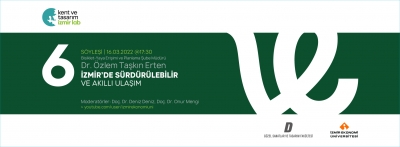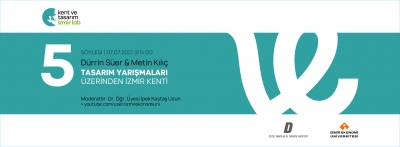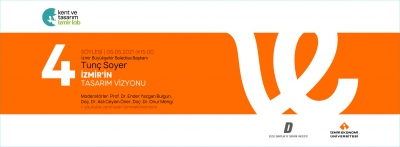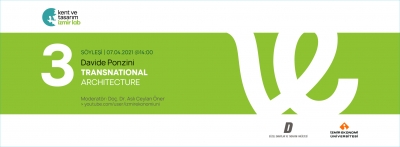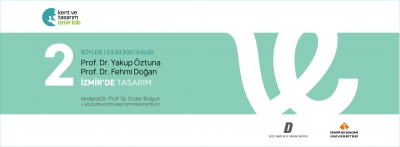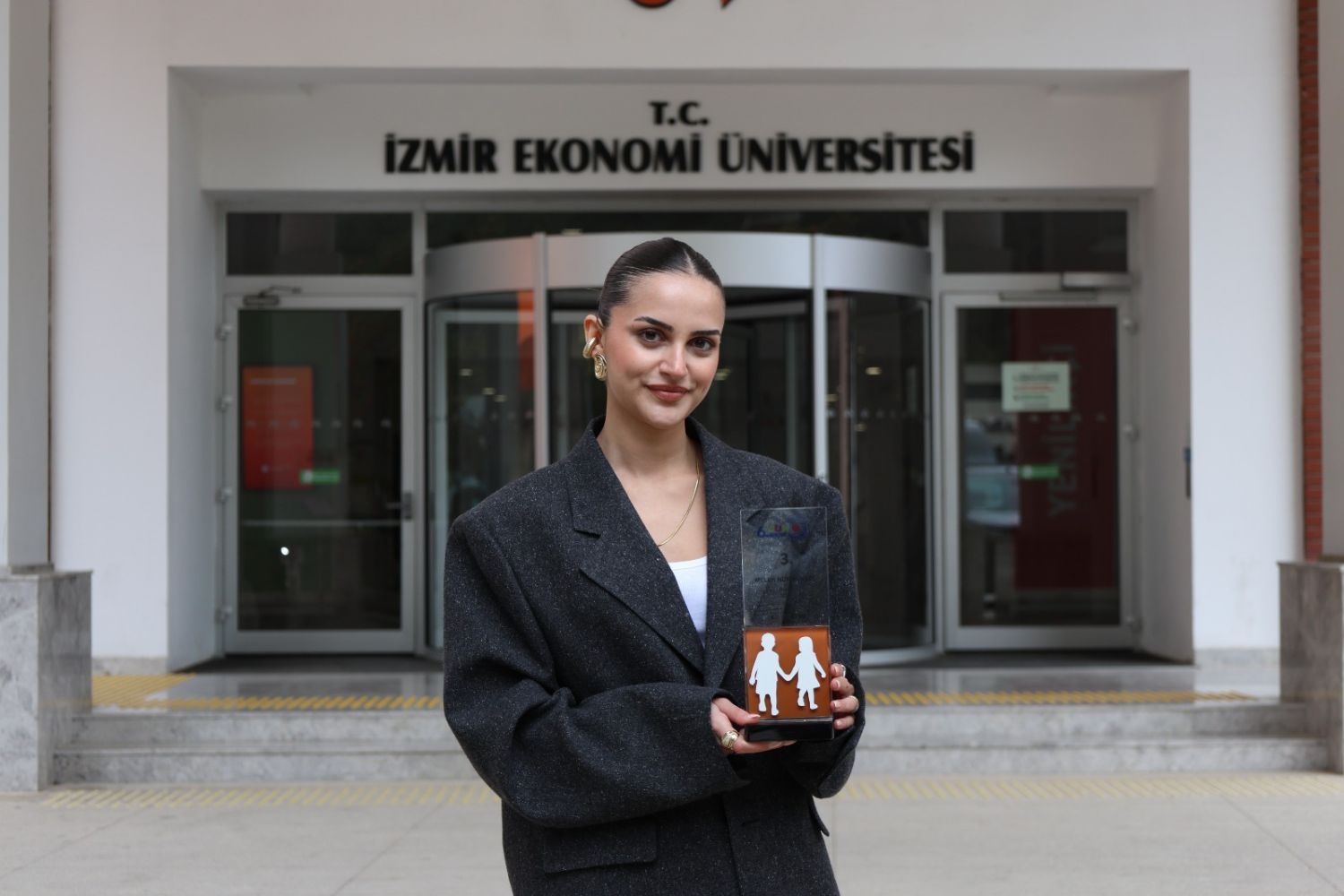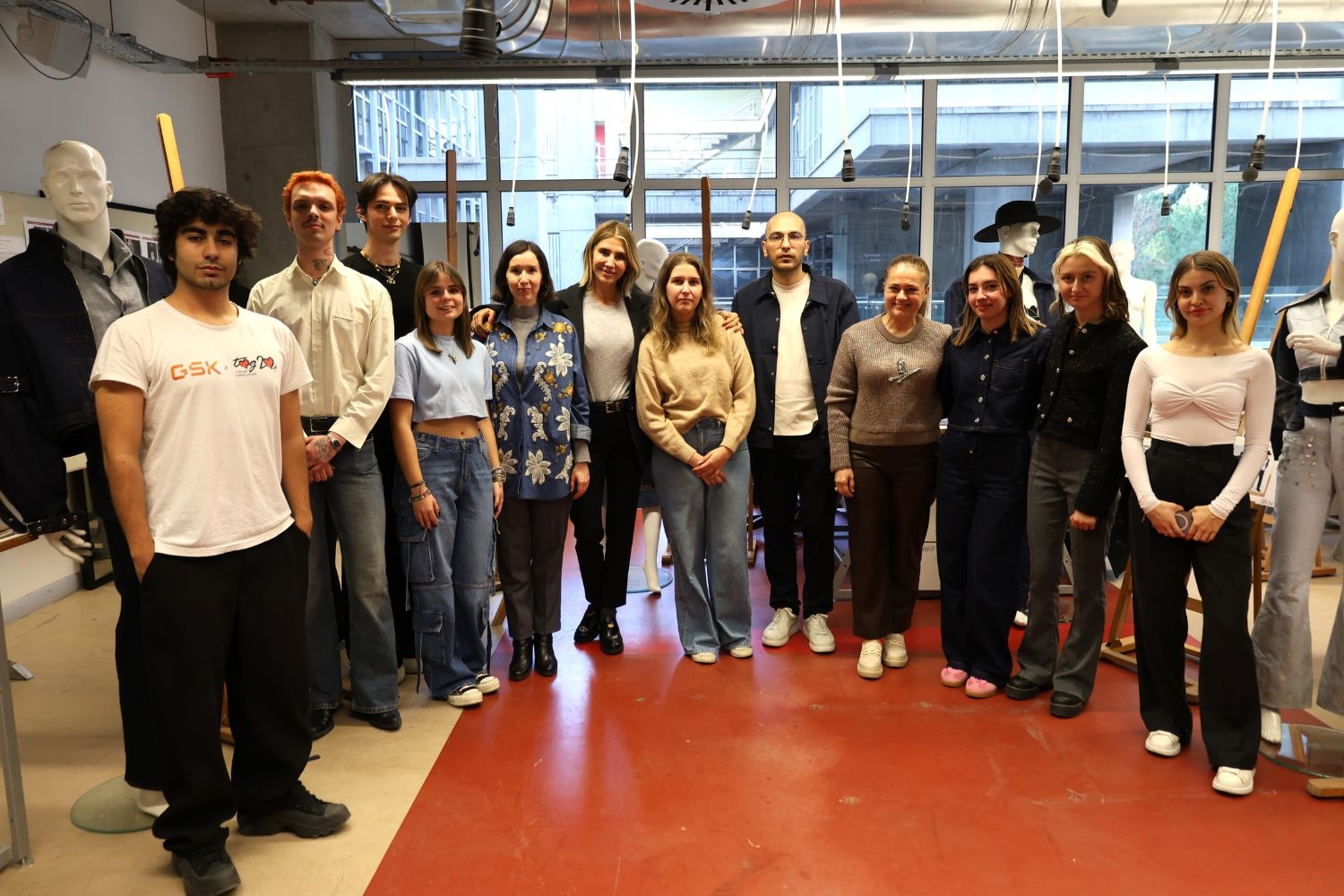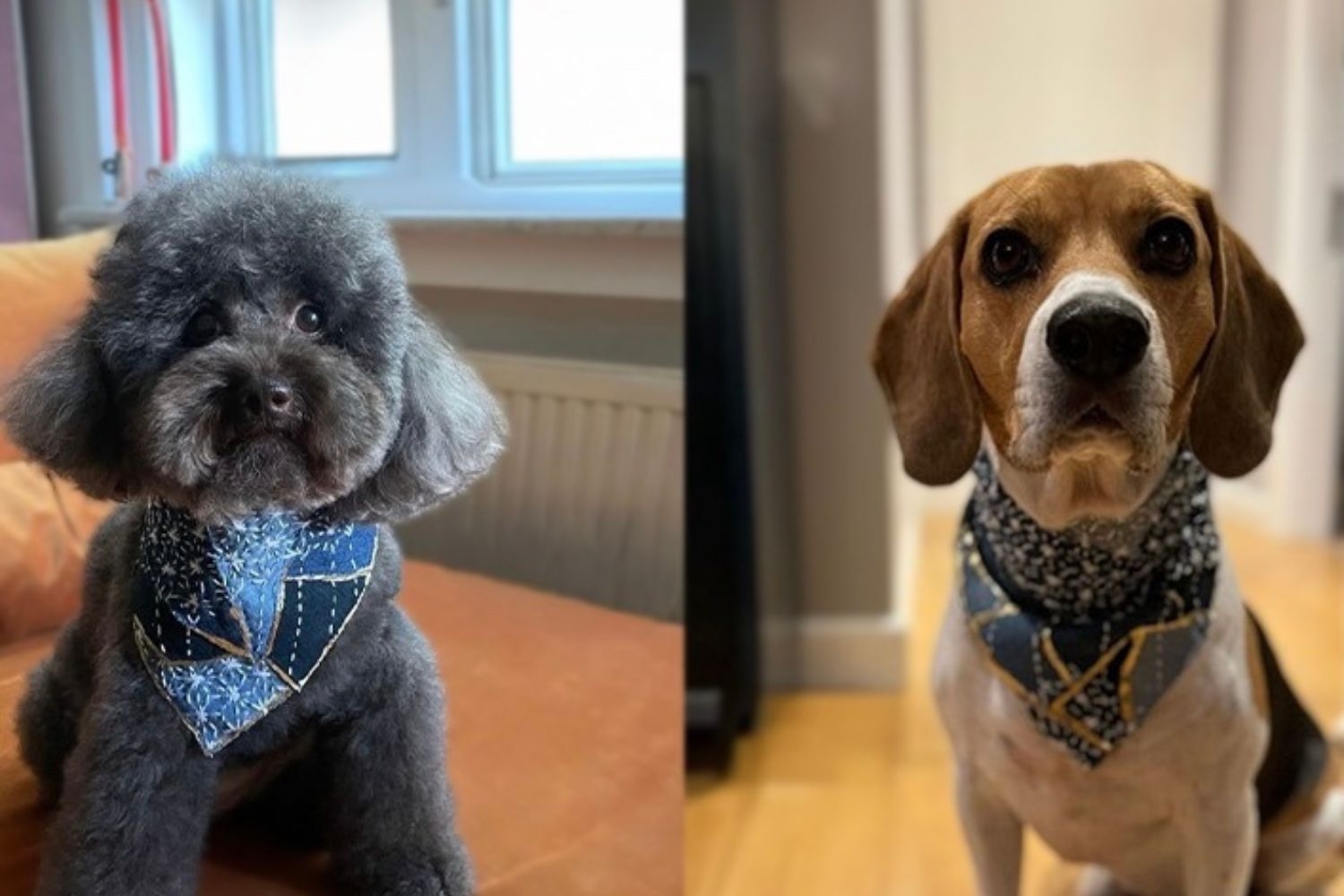FACULTY OF FINE ARTS AND DESIGN
Department of Textile and Fashion DesignFD 301 | Course Introduction and Application Information
| Course Name |
Fashion Design Studio: Collection II
|
|
Code
|
Semester
|
Theory
(hour/week) |
Application/Lab
(hour/week) |
Local Credits
|
ECTS
|
|
FD 301
|
Fall
|
2
|
6
|
5
|
7
|
| Prerequisites |
None
|
|||||
| Course Language |
English
|
|||||
| Course Type |
Required
|
|||||
| Course Level |
First Cycle
|
|||||
| Mode of Delivery | face to face | |||||
| Teaching Methods and Techniques of the Course | Critical feedbackJuryField trip / ObservationLecture / Presentation | |||||
| National Occupation Classification | - | |||||
| Course Coordinator | ||||||
| Course Lecturer(s) | ||||||
| Assistant(s) | ||||||
| Course Objectives | This course aims to provide students with the necessary knowledge and professional competence to design sustainable and responsible fashion collections. Students who take the course will gain an understanding of the basic concepts, production methods, and types of materials used in the field of sustainable fashion, enabling them to develop innovative and original designs for the contemporary fashion market. |
| Learning Outcomes |
The students who succeeded in this course;
|
| Course Description | The course focuses on the development of contemporary collections that address the cultural, social, and economic issues and needs of the fashion industry, accompanied by a series of lectures on sustainable and responsible fashion. |
| Related Sustainable Development Goals |
|
|
Core Courses | |
| Major Area Courses |
X
|
|
| Supportive Courses | ||
| Media and Management Skills Courses | ||
| Transferable Skill Courses |
WEEKLY SUBJECTS AND RELATED PREPARATION STUDIES
| Week | Subjects | Related Preparation |
| 1 | (22/09/25) Introduction of the course, course program and the materials PROJECT 1: Sustainable Collection Design for the Digital Future │Introduction (24/09/25) PRESENTATION: Fashion for Resistance and Narrative Building Warm-up Exercise: Interactive Theme Building Exercise Studio Critique 1│ Design Research and Concept Development (%5) | Margiela, M. (2009). Maison Martin Margiela. Rizzoli International Publications. Seivewright, S. (2012). Basics Fashion Design 01: Research and Design (2nd ed.). AVA Publishing. ISBN: 9782940411702, p.8-76. |
| 2 | (29/09/25) Studio Critique 1│Design Research and Concept Development (continues) Studio Critique 2│Concept Board Design (%5) (01/10/25) Studio Critique 3│Material Research and Surface Design (%5) | Seivewright, S. (2012). Basics Fashion Design 01: Research and Design (2nd ed.). AVA Publishing. ISBN: 9782940411702, p.80-106. Udale, J. (2008). Basics Fashion Design 02: Textiles and Fashion. AVA Publishing. ISBN: 978-2-940373-64-2. |
| 3 | (06-08/10/25) Studio Critique 4│Design Development (%5) | Seivewright, S. (2012). Basics Fashion Design 01: Research and Design (2nd ed.). AVA Publishing. ISBN: 9782940411702, p.110-170. Hopkins, J. (2009). Basics fashion design 05: Fashion drawing. AVA Publishing. ISBN: 978-2-940411-15-3. p.48-77, 96-119. |
| 4 | (13-15/10/25) Studio Critique 5│Technical Drawings (%5) | Hopkins, J. (2009). Basics fashion design 05: Fashion drawing. AVA Publishing. ISBN: 978-2-940411-15-3. p.78-95, 120-147. |
| 5 | (20-22/10/25) Studio Critique 6│Product Development (%5) | Fisher, A. (2009). Basics fashion design 03: Construction. ISBN: 978-2-940373-75-8, p.24-89. Nakamichi, T. (2010). Pattern Magic. Laurence King Publishing. ISBN: 978-1-85669-705-7, p.12-103. Nakamichi, T. (2011). Pattern Magic 2. Laurence King Publishing. ISBN: 978-1-85669-706-4, p.12-102. |
| 6 | (27/10/25) Studio Critique 6│Product Development (continues) (29/10/25) Republic Day (Official Holiday) *Make-up classes for lessons on Wednesday, October 29, 2025, will be announced. | Fisher, A. (2009). Basics fashion design 03: Construction. ISBN: 978-2-940373-75-8, p.24-89. Nakamichi, T. (2010). Pattern Magic. Laurence King Publishing. ISBN: 978-1-85669-705-7, p.12-103. Nakamichi, T. (2011). Pattern Magic 2. Laurence King Publishing. ISBN: 978-1-85669-706-4, p.12-102. |
| 7 | (03/11/25) Studio Critique 6│Product Development (continues) (05/11/25) Completion of Product, Research File, and Photo Shoot | Buckley, C., & McAssey, J. (2011). Basics Fashion Design 08: Styling. AVA Publishing. ISBN: 978-2940411399, p.112-167. |
| 8 | (10/11/25) PROJE 1│Oral Exam (%15) (12/11/25) PROJECT 2: Sustainable Denim │Introduction Studio Critique 7│Design Research and Concept Development: Concept Board + Brand Board + Customer Profile Board (%5) | Mbonu, E. (2014). Fashion Design Research. Laurence King Publishing. ISBN: 978-1-78067-179-6. Muthu, S. S. (Ed.). (2017). Sustainability in Denim. Woodhead Publishing. ISBN: 9 78-0-08-102043-2, p.27-48. Paul, R. (Ed.). (2015). Denim: Manufacture, Finishing and Applications. Woodhead Publishing. ISBN: 978-0-85709-843-6, p.191-218. Trynka, P., & Marsh, G. (2002). Denim: from cowboys to catwalks: a visual history of the world’s most legendary fabric. Aurum Press. ISBN: 1 84513 111 8, p.80-119. |
| 9 | MIDTERM WEEK | |
| 10 | (24/11/25) Technical Trip *The date of technical trip may change depending on the host company's work schedule. (26/11/25) Studio Critique 8│Material Research and Surface Designs (%5) | Fashionary (2022). The Denim Manual: A Complete Visual Guide for the Denim Industry. 978-9887711131, Chapter 3-4-5. Fletcher, K. (2012). Fashion and Sustainability: Design for Change. London, England: Laurence King Publishing.ISBN: 978 1 85669 754 5, p.12-32. Gullingsrud, A. (2017). Fashion fibers: Designing for sustainability. Bloomsbury Academic. ISBN: 978-1-5013-0664-8. |
| 11 | (01/12/25) Studio Critique 9│ Collection Development (%5) (03/12/25) Studio Critique 10│Technical Drawings (%5) | Fashionary (2022). The Denim Manual: A Complete Visual Guide for the Denim Industry. 978-9887711131, Chapter 3-4-5. Gwilt, A. (2014). A practical guide to sustainable fashion. Fairchild Books. ISBN: 978-1-3500-6704-2, p.47-70. Hopkins, J. (2009). Basics fashion design 05: Fashion drawing. AVA Publishing. ISBN: 978-2-940411-15-3. p.78-95. Szkutnicka, B. (2017). Flats: Technical drawing for fashion, second edition: A complete guide. Laurence King. |
| 12 | (08-10/12/25) Studio Critique 11│Product Development (%5) | Gwilt, A. (2014). A practical guide to sustainable fashion. Fairchild Books. ISBN: 978-1-3500-6704-2, p.71-92. Paul, R. (Ed.). (2015). Denim: Manufacture, Finishing and Applications. Woodhead Publishing. ISBN: 978-0-85709-843-6, p.219-270. Rissanen, T., & McQuillan, H. (2018). Zero waste fashion design. Bloomsbury Visual Arts. ISBN: 978-1-4725-8198-3. |
| 13 | (15-17/12/25) Studio Critique 11│Product Development (continues) | Gwilt, A. (2014). A practical guide to sustainable fashion. Fairchild Books. ISBN: 978-1-3500-6704-2, p.71-92. Paul, R. (Ed.). (2015). Denim: Manufacture, Finishing and Applications. Woodhead Publishing. ISBN: 978-0-85709-843-6, p.219-270. Rissanen, T., & McQuillan, H. (2018). Zero waste fashion design. Bloomsbury Visual Arts. ISBN: 978-1-4725-8198-3. |
| 14 | (22-24/12/24) Studio Critique 11│Product Development (continues) | Gwilt, A. (2014). A practical guide to sustainable fashion. Fairchild Books. ISBN: 978-1-3500-6704-2, p.71-92. Paul, R. (Ed.). (2015). Denim: Manufacture, Finishing and Applications. Woodhead Publishing. ISBN: 978-0-85709-843-6, p.219-270. Rissanen, T., & McQuillan, H. (2018). Zero waste fashion design. Bloomsbury Visual Arts. ISBN: 978-1-4725-8198-3. |
| 15 | (29/12/25) Studio Critique 12│Pre-Jury (%5) (31/12/25) Review of the Semester | Gwilt, A. (2014). A practical guide to sustainable fashion. Fairchild Books. ISBN: 978-1-3500-6704-2, p.71-92. Paul, R. (Ed.). (2015). Denim: Manufacture, Finishing and Applications. Woodhead Publishing. ISBN: 978-0-85709-843-6, p.219-270. Rissanen, T., & McQuillan, H. (2018). Zero waste fashion design. Bloomsbury Visual Arts. ISBN: 978-1-4725-8198-3. |
| 16 | Semester Review / PROJECT 2 │Jury Presentation (%25) |
| Course Notes/Textbooks | |
| Suggested Readings/Materials | Buckley, C., & McAssey, J. (2011). Basics Fashion Design 08: Styling. AVA Publishing. Fashionary (2022). The Denim Manual: A Complete Visual Guide for the Denim Industry. 978-9887711131. Fisher, A. (2009). Basics fashion design 03: Construction. ISBN: 978-2-940373-75-8. Fletcher, K. (2012). Fashion and Sustainability: Design for Change. London, England: Laurence King Publishing.ISBN: 978 1 85669 754 5. Gullingsrud, A. (2017). Fashion fibers: Designing for sustainability. Bloomsbury Academic. ISBN: 978-1-5013-0664-8. Gwilt, A. (2014). A practical guide to sustainable fashion. Fairchild Books. ISBN: 978-1-3500-6704-2. Hopkins, J. (2009). Basics fashion design 05: Fashion drawing. AVA Publishing. ISBN: 978-2-940411-15-3. Margiela, M. (2009). Maison Martin Margiela. Rizzoli International Publications. Mbonu, E. (2014). Fashion Design Research. Laurence King Publishing. ISBN: 978-1-78067-179-6. Muthu, S. S. (Ed.). (2017). Sustainability in Denim. Woodhead Publishing. ISBN: 9 78-0-08-102043-2. Nakamichi, T. (2010). Pattern Magic. Laurence King Publishing. Nakamichi, T. (2011). Pattern Magic 2. Laurence King Publishing. Paul, R. (Ed.). (2015). Denim: Manufacture, Finishing and Applications. Woodhead Publishing. ISBN: 978-0-85709-843-6. Rissanen, T., & McQuillan, H. (2018). Zero waste fashion design. Bloomsbury Visual Arts. ISBN: 978-1-4725-8198-3. Seivewright, S. (2007). Basics Fashion Design 01: Research and Design. AVA Publishing. Szkutnicka, B. (2017). Flats: Technical drawing for fashion, second edition: A complete guide. Laurence King. Trynka, P., & Marsh, G. (2005). Denim: A visual history of the world’s most legendary fabric (2nd ed.). Aurum Press. ISBN: 1 84513 111 8. Udale, J. (2008). Basics Fashion Design 02: Textiles |
EVALUATION SYSTEM
| Semester Activities | Number | Weigthing |
| Participation | ||
| Laboratory / Application | ||
| Field Work | ||
| Quizzes / Studio Critiques |
1
|
60
|
| Portfolio | ||
| Homework / Assignments | ||
| Presentation / Jury |
1
|
25
|
| Project | ||
| Seminar / Workshop | ||
| Oral Exams |
1
|
15
|
| Midterm | ||
| Final Exam | ||
| Total |
| Weighting of Semester Activities on the Final Grade |
3
|
100
|
| Weighting of End-of-Semester Activities on the Final Grade | ||
| Total |
ECTS / WORKLOAD TABLE
| Semester Activities | Number | Duration (Hours) | Workload |
|---|---|---|---|
| Theoretical Course Hours (Including exam week: 16 x total hours) |
16
|
2
|
32
|
| Laboratory / Application Hours (Including exam week: '.16.' x total hours) |
16
|
6
|
96
|
| Study Hours Out of Class |
14
|
1
|
14
|
| Field Work |
0
|
||
| Quizzes / Studio Critiques |
1
|
34
|
34
|
| Portfolio |
0
|
||
| Homework / Assignments |
0
|
||
| Presentation / Jury |
1
|
22
|
22
|
| Project |
0
|
||
| Seminar / Workshop |
0
|
||
| Oral Exam |
1
|
12
|
12
|
| Midterms |
0
|
||
| Final Exam |
0
|
||
| Total |
210
|
COURSE LEARNING OUTCOMES AND PROGRAM QUALIFICATIONS RELATIONSHIP
|
#
|
Program Competencies/Outcomes |
* Contribution Level
|
|||||
|
1
|
2
|
3
|
4
|
5
|
|||
| 1 |
To be able to develop and design a collection independently. |
-
|
-
|
X
|
-
|
-
|
|
| 2 |
To be able to do maintain a design research individually or as a team. |
-
|
-
|
X
|
-
|
-
|
|
| 3 |
To be able to develop entrepreneurship- and managerial skills for a future professional practice. |
-
|
-
|
-
|
-
|
-
|
|
| 4 |
To be able to understand, interpret and apply theoretical knowledge in fashion and textile design. |
-
|
X
|
-
|
-
|
-
|
|
| 5 |
To be able to analyze and integrate the particular local and regional needs and of their profession. |
X
|
-
|
-
|
-
|
-
|
|
| 6 |
To be able to obtain a multidisciplinary point of view, follow and analyze the new issues, changes and trends in contemporary design and art in such a way that they can be integrated into design practice. |
-
|
-
|
X
|
-
|
-
|
|
| 7 |
To be able to apply industrial requirements, knowledge of material & usage and know-how knowledge in the creation of high quality fashion products. |
-
|
-
|
X
|
-
|
-
|
|
| 8 |
To be able to use digital information and communication technologies at a level that is adequate to the discipline of fashion and textile design. |
-
|
-
|
-
|
-
|
-
|
|
| 9 |
To be able to develop an ongoing analytical and professional approach to academic and design research. |
-
|
X
|
-
|
-
|
-
|
|
| 10 |
To be able to recognize the need and importance of a personal lifelong learning attitude towards their chosen area of interest. |
-
|
-
|
-
|
-
|
-
|
|
| 11 |
To be able to collect data in the areas of fashion and textile design and communicate with colleagues in a foreign language ("European Language Portfolio Global Scale", Level B1). |
-
|
-
|
-
|
-
|
-
|
|
| 12 |
To be able to speak a second foreign at a medium level of fluency efficiently. |
-
|
-
|
-
|
-
|
-
|
|
| 13 |
To be able to relate the knowledge accumulated throughout the human history to their field of expertise. |
-
|
-
|
-
|
-
|
-
|
|
*1 Lowest, 2 Low, 3 Average, 4 High, 5 Highest
NEWSALL NEWS

IZMIR UNIVERSITY OF ECONOMICS GÜZELBAHÇE CAMPUS
DetailsGLOBAL CAREER
As Izmir University of Economics transforms into a world-class university, it also raises successful young people with global competence.
More..CONTRIBUTION TO SCIENCE
Izmir University of Economics produces qualified knowledge and competent technologies.
More..VALUING PEOPLE
Izmir University of Economics sees producing social benefit as its reason for existence.
More..










